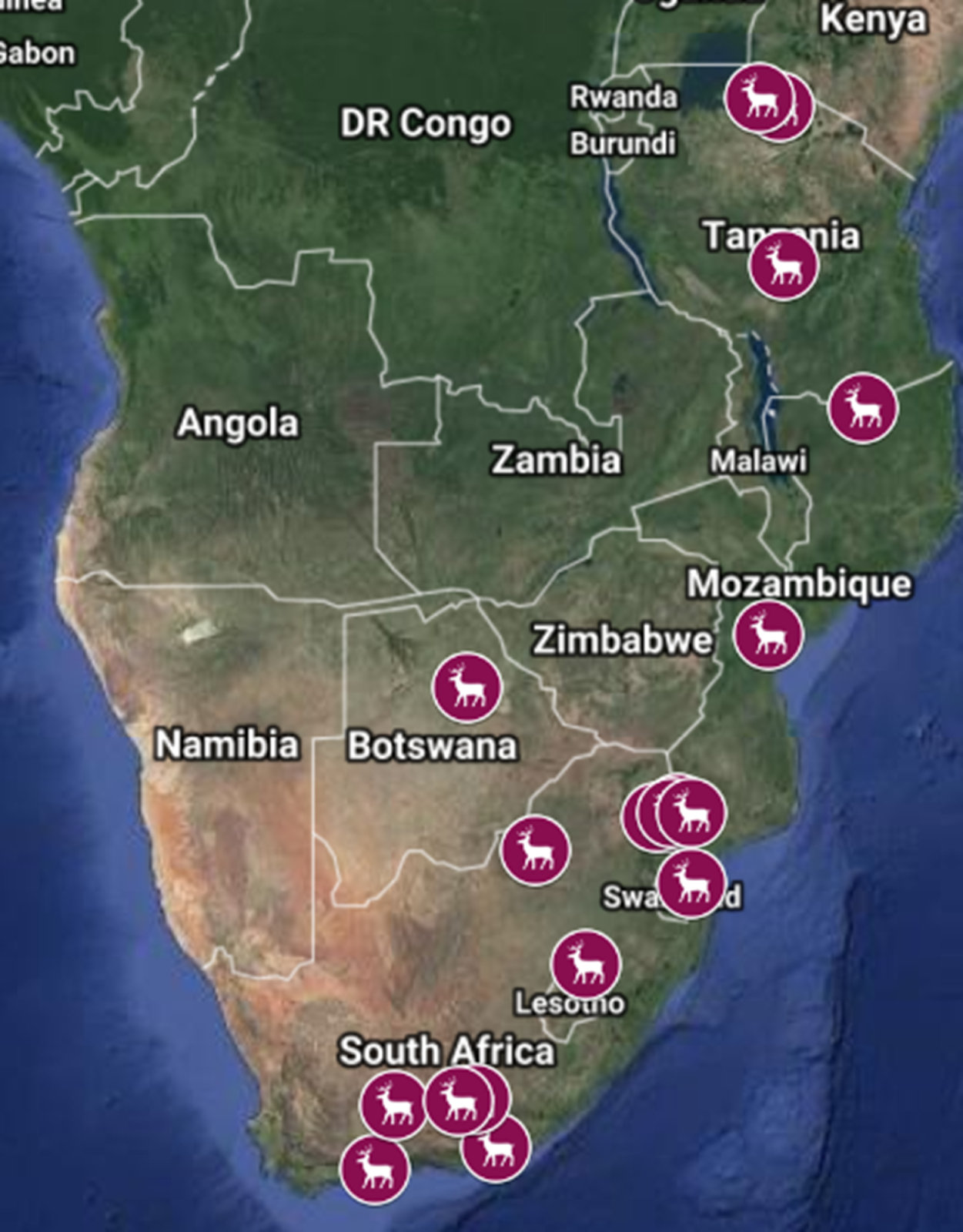Hundreds of camera-traps spread across southern Africa are providing a powerful new window into the dynamics of Africa's most elusive wildlife species
In response to the urgent need for accurate assessment of wildlife populations, SnapshotSafari is an unprecedented collaborative network of camera-trap grids in wildlife parks and reserves throughout Botswana, Mozambique, South Africa, Swaziland, Tanzania and Zimbabwe, with sites from Kenya, Malawi, and Rwanda coming online soon. By using the same data collection protocols at each protected area, we will evaluate how well wildlife are faring under different management strategies, providing valuable information to researchers and reserve managers.

The Lion Center’s renowned flagship citizen science project, Snapshot Serengeti, broke ground in 2010 when our researchers installed 225 camera traps in Serengeti National Park, Tanzania. Camera-traps use passive infrared sensors that take a series of three photographs when a warm object moves in front of the sensor. Our cameras snapped over 10 million photos, which were uploaded to an online platform hosted by Zooniverse.org for classification by citizen scientists. Over 165,000 people volunteered from countries around the world!
Currently, SnapshotSafari has received camera-trap data from 12 participating reserves, and six more camera-trap grids will be deployed in 2018 (Image 1). You can explore these reserves, view Africa’s variety of ecosystems through the lens of one of our camera-traps, and try your hand at identifying wildlife by visiting snapshotsafari.org.
Solving Conservation Challenges
Preserving biodiversity is one of the most pressing tasks for ecologists in the face of global climate change and an expanding human population. African lion (Panthera leo) populations are now limited to 17% of their former home ranges, and their populations continue to decline in every African country except South Africa, as do populations of leopards, cheetahs, elephants, rhino, and giraffe. To understand the best way to protect these species, SnapshotSafari considers multiple ecological factors like dispersal, reproductive limits, resource distribution, and species interactions. With this approach, we will provide guidance on how populations can withstand anthropogenic disturbance and climate change.
Camera-trapping has revolutionized biodiversity monitoring in the 21st century. Large-scale camera-trap grids offer a minimally invasive, low cost system for monitoring wildlife population trends. Additionally, camera traps have a higher capture rate for rare and cryptic species than observers on foot. These benefits make camera trapping a popular observation method, but the proliferation of projects has resulted in conflicting methodologies that are not comparable due to differences in time, scale, or protocols. In a world of big data, ecologists must find ways to coordinate data collection so that we can collectively study drivers of ecosystem change and stability worldwide. SnapshotSafari is an international effort to standardize camera-trapping protocols at key African protected areas and collaborate with an unprecedented network of researchers, park managers, conservation organizations, and volunteer groups to evaluate and improve conservation outcomes.
Results & Educational Outreach
Once classified and validated, the camera-trap data will be made available for scientific and educational purposes throughout the world. We have developed teaching modules for undergraduate courses in American universities using the data collected by Snapshot Serengeti, and have recently formed a partnership with Howard Hughes Medical Institute for the development of educational materials for middle and high school level courses using the data from SnapshotSafari. Once completed, these materials will be made publically available for use in classrooms around the world at www.hhmi/org/biointeractive and translated into several African languages for use in African classrooms.
We maintain online blogs and talk pages that engage our volunteers who want to learn more about African wildlife and conservation. Volunteers are able to save, tag, and share their favorite photos and learn more about the beautiful parks and reserves where these wildlife were photographed.
SnapshotSafari will enable researchers to closely examine questions of species coexistence, competition, trophic interactions, and other ecological relationships across a variety of habitat types, community compositions, and management strategies. The results will contribute to the development and refinement of important methods to conserve some of the most beloved species and ecosystems on our planet.
SnapshotSafari is made possible by support from the following sponsors.

|

|

|

|

|

|